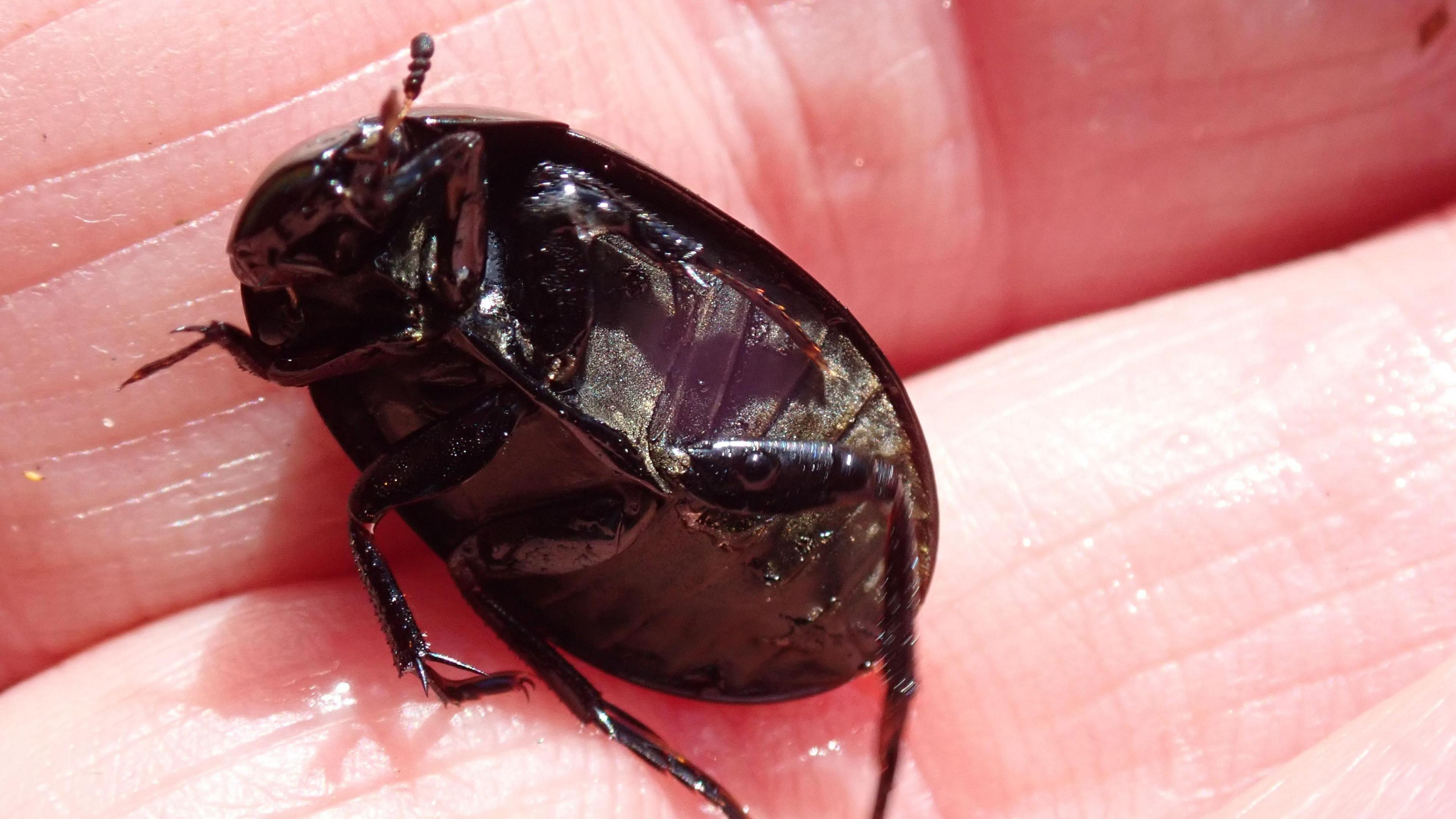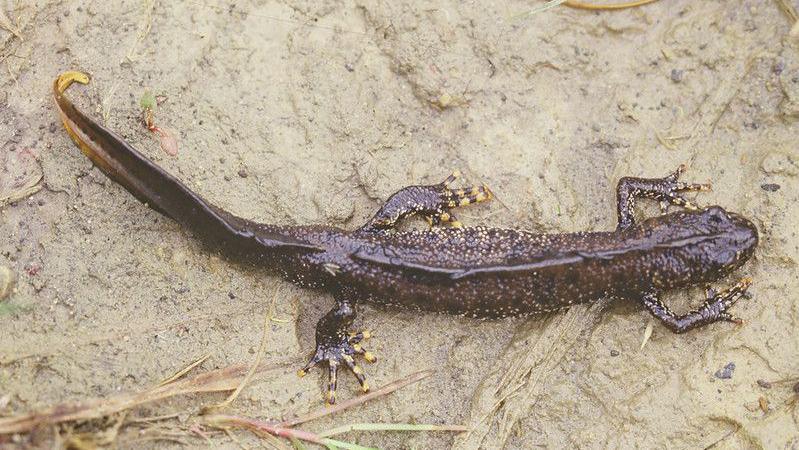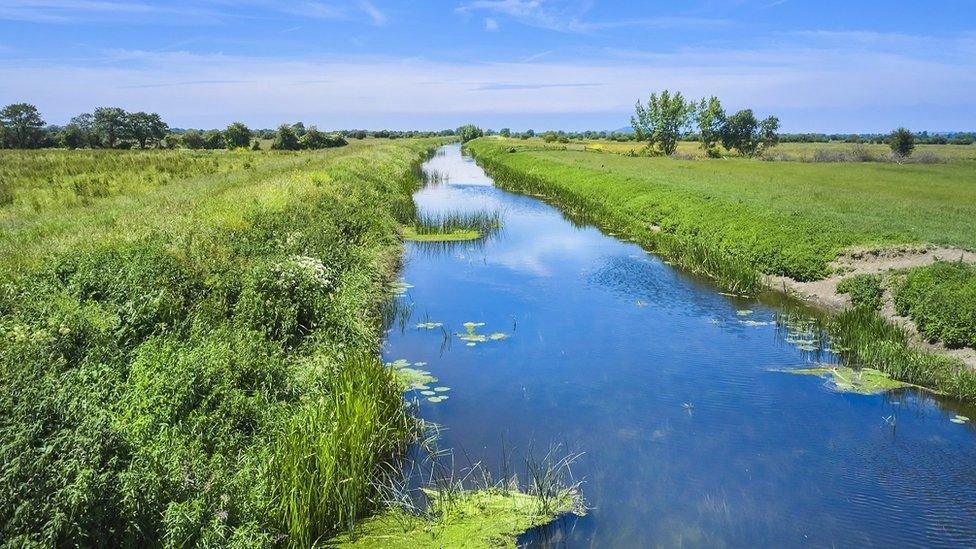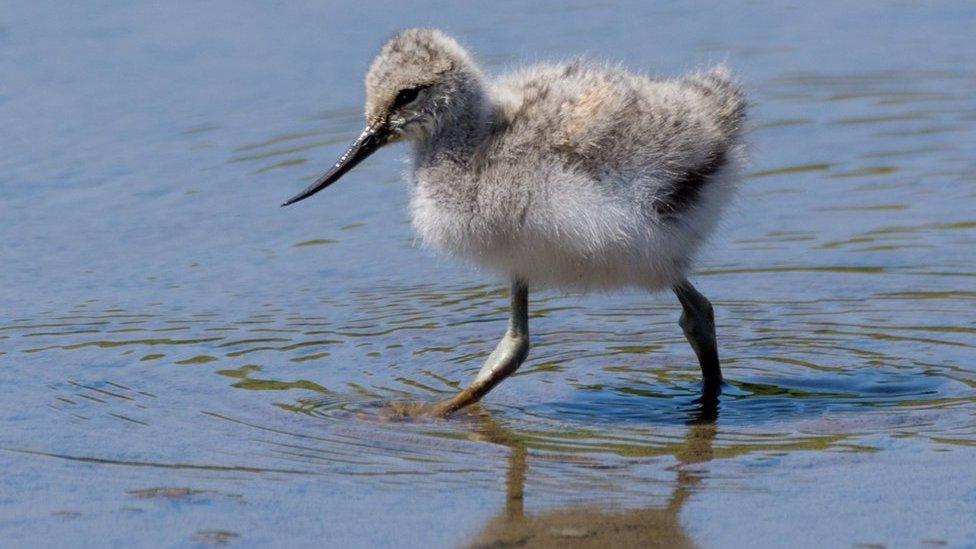Rare species found for first time in nature reserve

The lesser silver diving beetle is only found in parts of Somerset, Cheshire and Denbigh, North Wales
- Published
Two rare species have been found for the first time at a Somerset nature reserve.
Great crested newts and lesser silver diving beetles have been spotted at Shapwick Moor Nature Reserve in Glastonbury following the introduction of new wetland features.
Neither species had been recorded on the site before, making it an exciting discovery for the Hawk and Owl Trust owned nature reserve and Natural England, which funded the new habitat.
The project lead at Natural England, Simon Phelps, said the team is "pleased and surprised" to see that the rare species have colonised the habitats "so quickly".

The great crested newt has legal protection under the Wildlife and Countryside Act
Alex Learmont, Hawk and Owl Trust Reserve Warden, added: "We are thrilled the new scrapes are providing habitat for a range of species and communities, including species never previously recorded on the reserve and ones that are nationally rare."
The work to create the new wetland features is part of action across the country to grow a national Nature Recovery Network.
'Main hot spot'
Natural England funded the Hawk and Owl Trust to create four "scraped out areas of earth" that can be filled with water to create new habitats, as part of the Somerset Coast, Levels and Moors Nature Recovery Project.
Mr Phelps described Somerset as "the main hot spot" for the lesser silver diving beetles, which are currently on the UK Red Data Book of endangered species.
The great crested newt is an endangered species but can be found across the UK.
According to Mr Phelps, the presence of both species is said to be indicators of "good wetland habitat".
He added: “Finding these two rare and endangered species taking up residence on the site so soon after creating the scrapes shows the value of creating wetland features in this landscape."
Related topics
- Published19 May 2022

- Published19 March 2024
